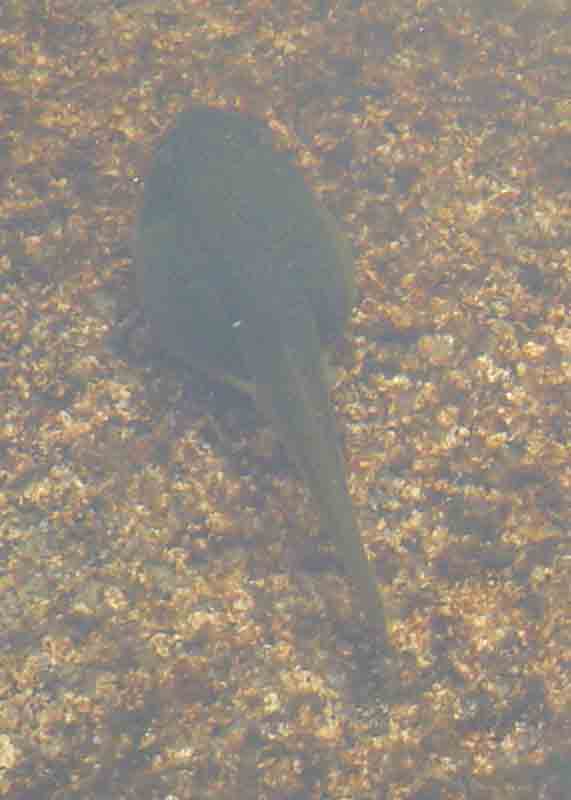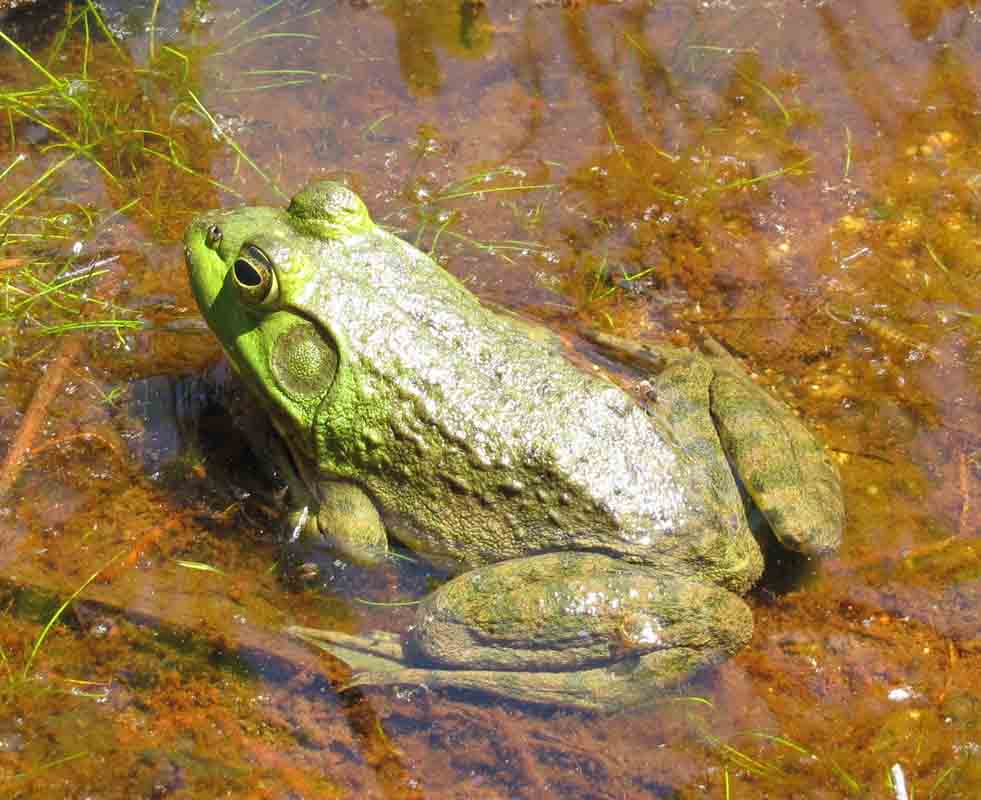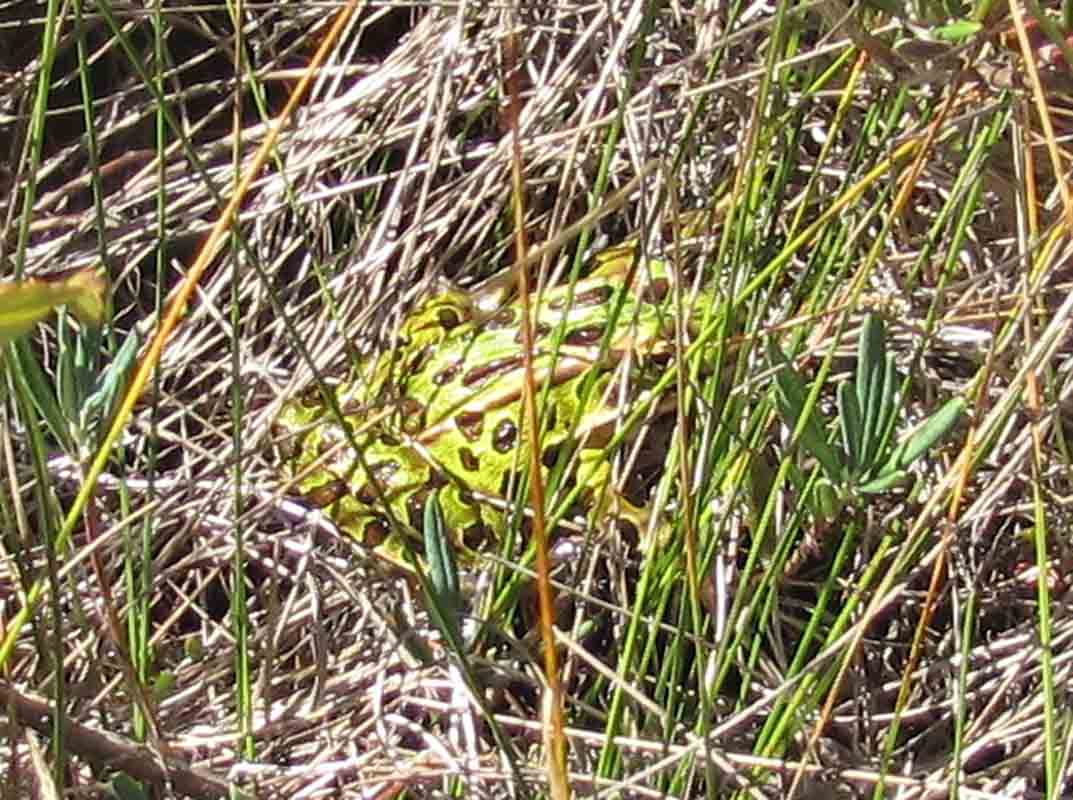

(click on an image to enlarge)
Maine is home to 9 species in 4 genera in 3 families. If you know which species you have or are interested in learning about, click on the appropriate link from the species list below. Otherwise, to determine which family your Anuran belongs to, refer to the table below the species list.
Family Bufonidae (1 genus, 1 species)
Anaxyris (1 species)
Anaxyris americanus (American toad)
Family Hylidae (2 genera, 2 species)
Dryophytes (1 species)
Dryophytes versicolor (gray treefrog)
Pseudacris (1 species)
Pseudacris crucifer (spring peeper)
Family Ranidae (1 genus, 6 species)
Lithobates (6 species)
Lithobates catesbeianus (bullfrog)
Lithobates clamitans (green frog)
Lithobates palustris (pickerel frog)
Lithobates pipiens (northern leopard frog)
Lithobates septentrionalis (northern leopard frog)
Lithobates sylvaticus (wood frog)
Key to the families of Order Anura
| red font = character state unique or nearly so | parotid glands | toe pads |
| Bufonidae | present | absent |
| Hylidae | absent | present |
| Ranidae | absent | absent |
Family Bufonidae - A distinctive feature of this family is the presence of a pair of dorsal parotid glands.
Anaxyris
[information to be added]
Anaxyris americanus (American toad) - [information to be added]
Family Hylidae - Species in this family have round toe pads.
Key to the genera of Family Hylidae
| “X” on back | toe pads | |
| Dryophytes | absent | present |
| Pseudacris | present | absent |
Dryophytes
[information to be added]
Dryophytes versicolor (gray treefrog) - [information to be added]
Pseudacris
[information to be added]
Pseudacris crucifer (spring peeper) - The vocalizing of the spring peepers is a sure sign of spring and is usually heard within days after the first wood frogs.
Family Ranidae - Members of this family do not have parotid glands (in contrast with the Bufonidae), and their toes taper to a point (unlike the rounded toes of the Hylidae).
Lithobates
[information to be added]
Key to the species of Lithobates adults
| red font = character state unique or nearly so | extent of dorsolateral ridges | dark brown “mask” | spots on back | length | vocalization | miscellaneous feature(s) |
| L. catesbeianus | curving around tympanum | absent | absent | up to 7.9" | a deep “rum” | most aquatic Maine frog |
| L. clamitans | from behind eyes to hind legs | absent | absent | 2.4–4.1" females slightly larger than males |
a plucked, loose banjo string; loud squeak when jumping away from danger | |
| L. palustris | from behind eyes to hind legs | absent | squarish, evenly spaced in two rows inside dorsolateral ridges | 1.7–3"; females slightly larger than males | ||
| L. pipiens | from behind eyes to hind legs | absent | roundish, with light borders, unevenly spaced in two rows inside dorsolateral ridges | males: 2–3.2" females: 3.1–3.7" |
||
| L. septentrionalis | from behind eyes to hind legs | absent | roundish, no distinct pattern | 1.8–3" | mink-like smell | |
| L. sylvaticus | from behind eyes to hind legs | present | absent | up to 2.4" | quacking | near water only while breeding |
Lithobates catesbeianus (bullfrog) is the largest frog in Maine. Bullfrogs overwinter as adults or first- or second-year tadpoles (lower left), with the first-year tadpoles emerging first followed by second-year tadpoles and finally adults.The adult (below right) resembles a large green frog (lithobates clamitans), but the bullfrog’s dorsolateral ridges curve around its tympanum (vs. running the length of the back in the green frog).


(click on an image to enlarge)
Lithobates clamitans (green frog): The call of a green frog sounds like a loose banjo string being plucked. The tympanum of adult males is larger than an eye and about equal in adult females.
.jpg)
(photo by Alison P. Bell; click on image to enlarge)
Lithobates palustris (pickerel frog): - [information to be added]
.jpg)
(photo by Alison P. Bell; click on image to enlarge)
Lithobates pipiens (northern leopard frog) - [information to be added]

(click on image to enlarge)
Lithobates septentrionalis (mink frog) - [information to be added]
Lithobates sylvaticus (wood frog) - The wood frog is the first frog in Maine to emerge from hibernation. It migrates to vernal pools, and the males begin to advertise for a mate.
.jpg)
(photo by Carol Muth; click on image to enlarge)